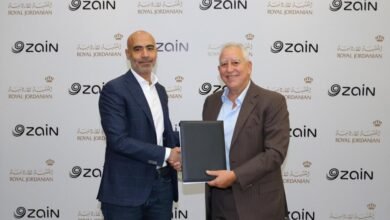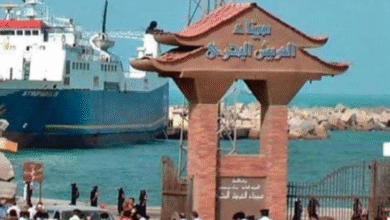Saudi Green Initiative at COP28: Nature, Land Use, and Oceans

Tomorrow, day 10 of COP28, will see delegates convene under the theme of nature, land use, and oceans.
Under the Saudi Green Initiative, Saudi Arabia is accelerating climate action in the Kingdom over three key targets. These targets are reducing emissions, greening Saudi Arabia, and protecting and conserving the Kingdom’s land and seas. Saudi Arabia is committed to protecting fragile ecosystems and strengthening biodiversity on land and in the sea.
NATURE
Over 1,660 endangered animals have been rewilded in Saudi Arabia’s nature reserves since the launch of SGI, including the Arabian oryx, Arabian and sand gazelles and Nubian ibex, reflecting the Kingdom’s unwavering commitment to biodiversity and climate action progress under the Saudi Green Initiative. In 2023, seven critically endangered Arabian leopards have been born in Saudi Arabia’s Conservation Breeding Centre in Taif. The cubs bring the total number of leopards at the center to 27 since the project started in 2020. The breeding program’s success reflects Saudi Arabia’s commitment to rehabilitation and conservation efforts being made across the Kingdom; from marine ecosystems to its animal kingdom.
SGI INITIATIVES ADDRESSING NATURE
• Under SGI, the Ba’a Foundation has inaugurated a turtle nesting conservation program to increase turtle nesting rates by 20% by 2023 and increase hatchling survival rates to 30% by 2025.
• The National Center for Wildlife (NCW), under SGI, will restore and rewild endangered endemic species in 10-15 locations per year under SGI.
RECENT ANNOUNCEMENTS
• The United Nations announced February 10 a designated International Day of the Arabian Leopard – a year after Saudi Arabia first observed the day – recognizing the Kingdom’s significant efforts in restoring the native population for nature conservation and raising awareness of its ‘critically endangered’ status.
• Twenty-three mountain ibexes were released in the Asir mountains in southwestern Saudi Arabia as part of ongoing work to rehabilitate the area’s ecosystems and bolster its biodiversity. The initiative, a collaboration between the National Center for Wildlife and Soudah Development, is one example of the widespread efforts taking place to protect and grow the populations of endangered native species within the Kingdom.
LAND USE
Saudi Arabia’s afforestation ambitions to grow 10 billion trees across the Kingdom will be met in the coming decades with 43.9 million trees and shrubs already planted since the launch of SGI; rehabilitating 94,000 hectares of degraded land – the equivalent of over 146,000 football fields. In 2023, a roadmap was established through an in-depth feasibility study conducted over two years, to reach the target both sustainability and implementing sustainable irrigation practices.
SGI INITIATIVES ADDRESSING LAND USE
• In 2023, Saudi Arabia was announced as host for COP16 – the sixteenth session of the Conference of the Parties to the United Nations Convention to Combat Desertification (UNCCD) – to take place between 02 and 13 December 2024 in Riyadh.
• Under SGI, the National Center for Vegetation Cover (NCVC) is conserving eight million hectares of rangelands across 26 sites, reducing the impact of sandstorms and improving public health, while helping restore the indigenous flora and fauna.
• NCVC is also developing vegetation cover, wildlife and infrastructure for 50 national parks. The initiative will establish new national parks and rehabilitate existing ones, and plant 10 million trees across them.
RECENT ANNOUNCEMENT
• In October 2023, the Saudi Green Initiative announced its roadmap to achieving the Kingdom’s ambitious greening target of growing 10 billion trees, not only to meet the target but to do so sustainably with native varieties that are sympathetic to the Kingdom’s natural landscape, and with the use of sustainable irrigation methods.
OCEANS
Saudi Arabia will see 30% of both terrestrial and marine area protected by 2030 under SGI. In an environment where extreme heat and dust storms are prevalent, the initiative reflects an uncompromising need for mitigating the impacts of these events, particularly for water security.
SGI INITIATIVES ADDRESSING OCEANS
• The Red Sea Development Company and AMAALA are creating high resolution habitat and biodiversity maps. The initiative will conduct high resolution aerial and drone mapping of terrestrial and shallow marine areas and develop a suite of GIS map layers of marine and terrestrial habitats across the TRSP and AMAALA Special Economic Zones.
• Both entities are also enhancing biological diversity across the TRSP and AMAALA Special Economic Zones by 30% by 2040 through the enhancement of coral reefs, mangroves, seagrass, and native vegetation, as well as re-wilding of flora and fauna.
• Red Sea Global is establishing a 6,693 km2 ‘no-take’ Marine Protected Area as part of the proposed new Special Economic Zone around the AMALAA and the Red Sea project developments. This will assist efforts to reduce coral reef habitat damage from excessive anchoring.
RECENT ANNOUNCEMENT
• Speaking at the Third Edition SGI Forum on a panel exploring the Red Sea economy, John Pagano, CEO of Red Sea Global, highlighted the company’s shift from sustaining the Red Sea’s natural landscape to healing and recovering what has been damaged. Professor Carlos Duarte, a marine scientist at King Abdullah University of Science and Technology, echoed this sentiment, saying “we are no longer content with conservation; we need to go into regeneration.”



